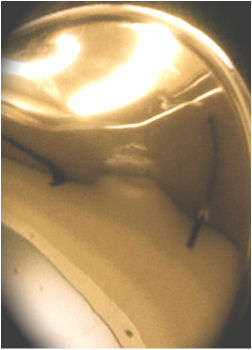
Auditions
Auditions for Fall 2023 will be offered in-person. A virtual option is available for students coming from out-of-state or who request it for specific reasons.
Music Early Decision
General Audition
For more information on auditions, please click here
Audition Requirements
The following are the general guidelines. If you have specific questions about what you want to play, simply contact Professor Witek and he will discuss your alternatives.
Your audition will consist of two contrasting sections (movements, pieces, or études). One selection should highlight technical facility and expertise while the contrasting selection should demonstrate lyrical playing. Both selections will be evaluated on execution of fundamentals, preparation, and musical maturity. The audition will also consist of major scales (two octaves where possible) and sight-reading.
* Orchestral excerpts are not required of performance applicants, but the inclusion of several standard excerpts as a part of your audition is welcomed.
Examples of acceptable trumpet audition selections
Lyrical
Technical
Below are some helpful tips if you are having a virtual or recorded audition:
Camera/microphone
Auditions for Fall 2023 will be offered in-person. A virtual option is available for students coming from out-of-state or who request it for specific reasons.
Music Early Decision
- Submit video auditions by November 1
- Zoom meeting in November
- Decisions will be released in December
- “Binding contract” and will commit in January 2023
- Option to re-audition in the spring to try to increase scholarship
General Audition
- Must apply to Stetson first
- Auditions will take place in-person on each Saturday from January 21 – February 18, 2023.
- A virtual option is available for students coming from out-of-state or who request it for specific reasons.
- Decisions will be released in early March 2023
For more information on auditions, please click here
Audition Requirements
The following are the general guidelines. If you have specific questions about what you want to play, simply contact Professor Witek and he will discuss your alternatives.
Your audition will consist of two contrasting sections (movements, pieces, or études). One selection should highlight technical facility and expertise while the contrasting selection should demonstrate lyrical playing. Both selections will be evaluated on execution of fundamentals, preparation, and musical maturity. The audition will also consist of major scales (two octaves where possible) and sight-reading.
* Orchestral excerpts are not required of performance applicants, but the inclusion of several standard excerpts as a part of your audition is welcomed.
Examples of acceptable trumpet audition selections
Lyrical
- Arutunian - Concerto (lyrical sections D-F, M-O)
- Charlier - 36 Études Transcendantes, etudes no. 2,4, or 6 titled "Du Style"
- Grant - Fantasie of Passage mm. 10-62 on trumpet, not flugelhorn
- Haydn - Concerto, movement 2
- Higdon - Trumpet Songs, I. Morning Opens
- Vannetelbosch - Vingt Etudes, Etude no. 1 Larghetto
- Advanced Concert Studies for Trumpet (written for Philip Smith):
- pg. 10-11, Lyric Piece, Gregory Pascuzzi
- pg. 25, Romance Etude, Joseph Turrin
- Voxman Etudes:
- pg. 14, Valse, e minor. Bohme
- pg. 24, Adagio cantabile, Eb Major. Pietzsch
- pg. 37, Allegro, E Major. Fedorow
- pg. 12, Larghetto, G Major
- pg. 14, Valse, e minor. Bohme
Technical
- Arban - Characteristic study (any)
- Arutunian - Concerto
- Bosquet - (any)
- Charlier - 36 Études Transcendantes, etude no. 1 De L'Articulation
- Day - Enigma, I-Chen Yeh (on trumpet)
- Goedicke, A. - Concert Etude
- Hindemith – Sonata, movement 1
- Kennan - Sonata, movement 1
- Larsen - Fanfare for the Women
- Peeters - Sonata in Bb, op. 51, movement 1
- Stevens - Sonata (1956), movement 1
- Advanced Concert Studies for Trumpet (written for Philip Smith):
- pg. 7, Tangents, James Curnow
- pg. 12-13, Scherzino, James Barnes
- pg. 16-17, Declaration, Douglas Court
- Voxman Etudes
- pg. 3, Alla Breve, C Major. Bohme
- pg. 19, Allegretto affettuoso, g minor. Gatti
- pg. 32, Adagio cantabile, Ab Major. Duhew
- pg. 27, allegretto, c minor. Bohme
Below are some helpful tips if you are having a virtual or recorded audition:
Camera/microphone
- Any video camera, DSLR camera, cell phone camera, or computer with a camera/microphone will work.
- If using your phone, turn your phone horizontally (to landscape mode) and record using the back camera (non-screen side).
- Record the highest-quality video and audio you can.
- Do not use the digital zoom, as it will reduce the video quality.
- Experiment with different rooms to record in, different distances from the microphone, and different bell angles (normally an angle not directly towards the microphone on a camera is best).
- Check your audio and make sure you are not recording so loud that your sound becomes distorted.
- Using an external microphone is recommended, but not required. Please do not edit your recording with adding reverb.
- A quiet room free of external noise. Turn off anything that hums or buzzes, like fans, air conditioners, or heaters.
- Make sure the camera is stable (use a tripod if possible).
- Make sure the lighting is good and you don’t have too much light coming from behind you.
- Turn off notifications if recording with a phone or computer.
